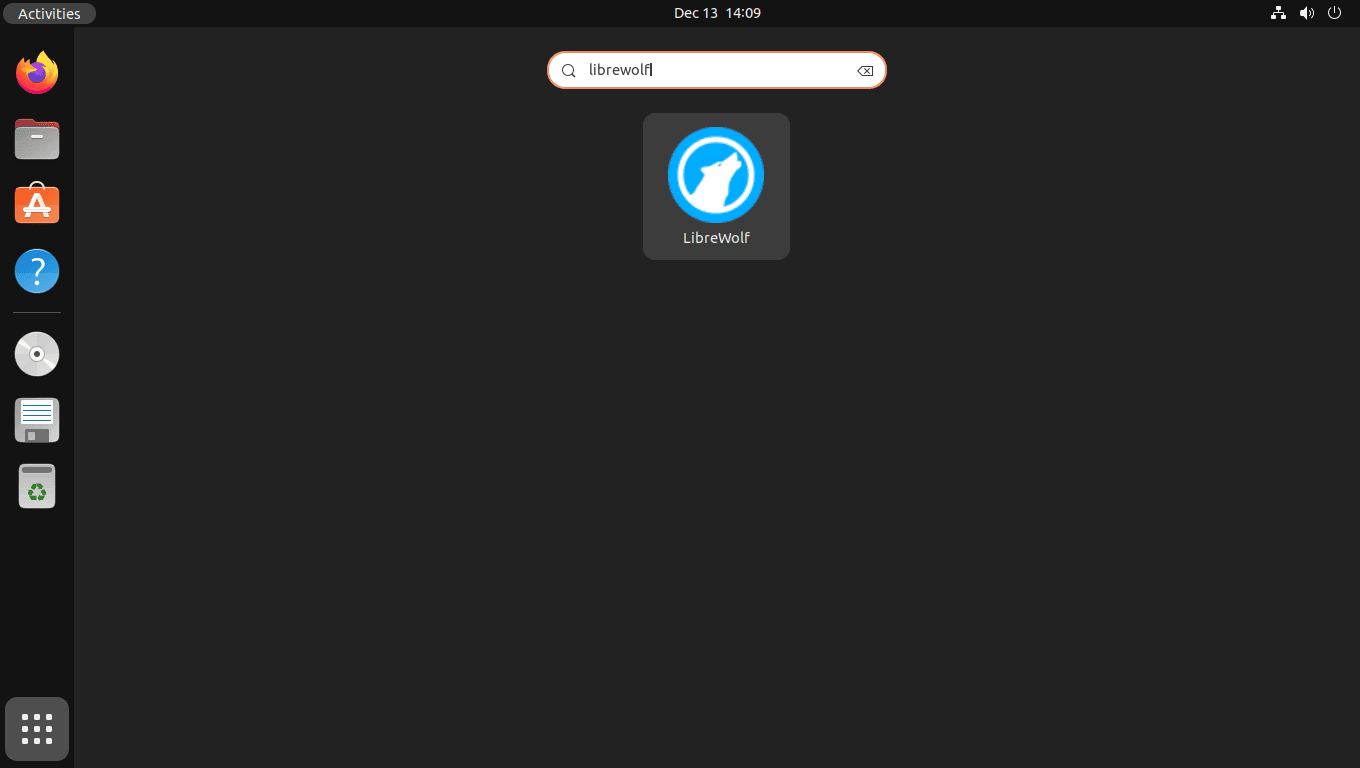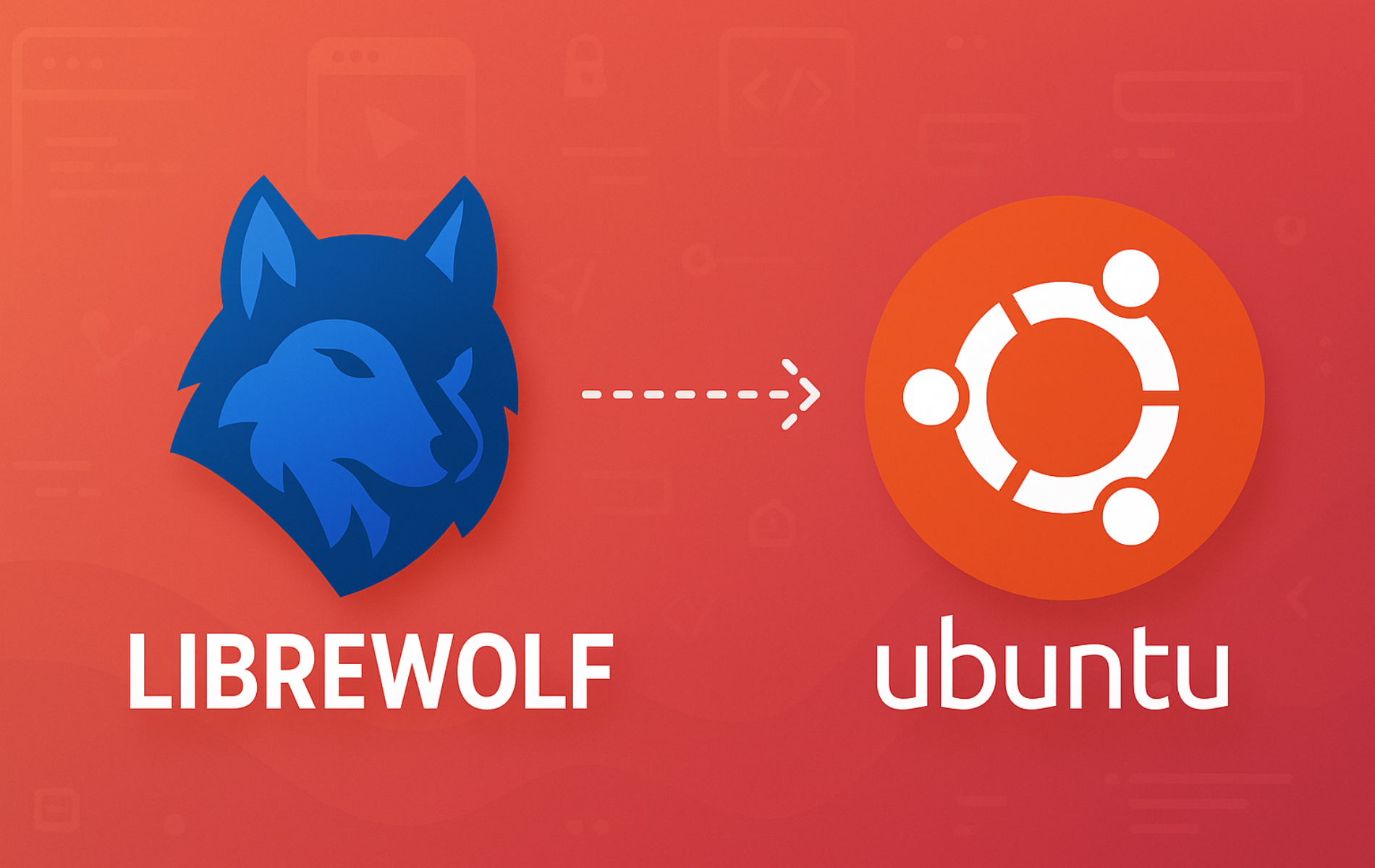Significantly, LibreWolf provides Firefox’s rendering engine with privacy-focused defaults. Tracker blocking, fingerprinting resistance, and telemetry removal work out-of-the-box without extensions. Additionally, common use cases include browsing without advertising trackers, preventing browser fingerprinting across sites, and eliminating Mozilla telemetry collection. This guide walks through installing LibreWolf on Ubuntu using the official repository managed by extrepo or Flatpak. By the end, you’ll have a working privacy-focused browser verified through version checks and ready for immediate use.
Choose Your LibreWolf Installation Method
Generally, LibreWolf offers two primary installation methods on Ubuntu: the official APT repository managed through extrepo and Flatpak from Flathub. The extrepo method integrates with your system package manager for automatic updates alongside other system packages, while Flatpak provides sandboxed installation with application isolation. Ultimately, both methods deliver the same LibreWolf browser with identical privacy features.
| Method | Channel | Version | Updates | Best For |
|---|---|---|---|---|
| APT Repository (Extrepo) | Official Repository | Latest stable | Automatic via apt upgrade | Most users who prefer system package manager integration |
| Flatpak | Flathub | Latest stable | Automatic via flatpak update | Users who want sandboxed installation with application isolation |
For most users, the APT repository method is recommended because it integrates seamlessly with Ubuntu’s package management system and receives updates alongside other system packages. However, use Flatpak if you specifically need application sandboxing or run multiple browsers with isolated profiles.
This guide supports Ubuntu 22.04 LTS and 24.04 LTS installations. The extrepo LibreWolf repository provides packages for all current Ubuntu LTS releases, while Flatpak remains compatible across all versions. Commands shown work identically on both supported LTS releases.
Method 1: Install LibreWolf via APT Repository
Specifically, the APT repository method uses extrepo, a tool that manages external repositories for Debian-based distributions. This approach simplifies repository management and ensures you receive official LibreWolf packages with automatic updates through Ubuntu’s standard package management system.
Install Extrepo Tool
First, install the extrepo package manager tool. Notably, this utility handles repository configuration and GPG key management automatically:
sudo apt update && sudo apt install extrepo -yEnable LibreWolf Repository
Once extrepo is installed, enable the official LibreWolf repository. Subsequently, this command configures the repository sources and imports the necessary GPG keys for package verification:
sudo extrepo enable librewolfUpdate Package Index
Next, refresh the package index to include LibreWolf packages from the newly enabled repository:
sudo apt updateSubsequently, after refreshing the package cache, verify the repository was added successfully by checking LibreWolf package availability. Consequently, run the following command:
apt-cache policy librewolflibrewolf:
Installed: (none)
Candidate: 145.0.2-2
Version table:
145.0.2-2 500
500 https://repo.librewolf.net librewolf/main amd64 Packages
Install LibreWolf Package
Consequently, with the repository configured and verified, proceed to install LibreWolf from the repository:
sudo apt install librewolf -yVerify LibreWolf Installation
Finally, confirm the installation completed successfully by checking the installed version:
librewolf --versionMozilla Firefox 145.0
Method 2: Install LibreWolf via Flatpak and Flathub
Alternatively, Flatpak provides sandboxed application installation with filesystem and process isolation from the host system. Furthermore, this method works across all Linux distributions and receives updates independently from Ubuntu’s release cycle.
If Flatpak is not installed on your system, follow our Flatpak installation guide to set up the framework and add the Flathub repository. This typically takes under five minutes.
Install LibreWolf via Flatpak
First, enable the Flathub repository if you have not already done so. Notably, the --if-not-exists flag prevents errors if Flathub is already configured:
sudo flatpak remote-add --system --if-not-exists flathub https://flathub.org/repo/flathub.flatpakrepoNext, install LibreWolf from Flathub. Additionally, the -y flag automatically confirms the installation prompt:
sudo flatpak install --system flathub io.gitlab.librewolf-community -yThereafter, once complete, verify the Flatpak installation completed successfully:
flatpak list | grep -i librewolfLibreWolf io.gitlab.librewolf-community 145.0.2 stable system
Launching LibreWolf Browser via CLI OR GUI
Furthermore, after installation, LibreWolf can be launched from the command line for quick access. Alternatively, launch through your desktop environment’s application menu for standard workflows.
Launch LibreWolf from Terminal
For example, for APT installations, launch LibreWolf directly from the terminal:
librewolfIn contrast, for Flatpak installations, use the full application identifier:
flatpak run io.gitlab.librewolf-communityLaunch LibreWolf from Applications Menu
Alternatively, launch LibreWolf through your desktop environment’s application menu:
- Click on Activities in the top-left corner of your screen.
- Select Show Applications (usually represented by a grid of dots).
- Locate and click on the LibreWolf icon.


Manage LibreWolf Browser
Moreover, after installation, you can manage LibreWolf through standard package management commands. Specifically, this section covers updating the browser to the latest version and completely removing it from your system when needed.
Update LibreWolf Browser
LibreWolf installed via APT receives updates automatically through Ubuntu’s standard system update process. However, to manually check for and install updates:
sudo apt update && sudo apt install --only-upgrade librewolfAlternatively, for Flatpak installations, update LibreWolf alongside other Flatpak applications:
sudo flatpak update --systemRemove LibreWolf Browser
APT Repository Removal
First, remove the LibreWolf package from your system:
sudo apt remove --purge librewolfAdditionally, remove orphaned dependencies that were automatically installed with LibreWolf:
sudo apt autoremoveNext, disable the LibreWolf repository through extrepo:
sudo extrepo disable librewolfAdditionally, remove the extrepo tool if you no longer need it for other repositories:
sudo apt remove --purge extrepoFinally, verify the repository was removed by refreshing the package cache and checking LibreWolf availability:
sudo apt update
apt-cache policy librewolflibrewolf: Installed: (none) Candidate: (none) Version table:
Flatpak Removal
To begin, remove the LibreWolf Flatpak package:
sudo flatpak uninstall --system io.gitlab.librewolf-communityRemove User Data and Configuration
Warning: The following commands permanently delete all LibreWolf user data including bookmarks, passwords, browsing history, and custom settings. Export any data you want to keep before proceeding.
First, for APT installations, remove LibreWolf’s profile and cache directories:
rm -rf ~/.librewolf ~/.cache/librewolfConversely, for Flatpak installations, remove the sandboxed application data:
rm -rf ~/.var/app/io.gitlab.librewolf-communityClosing Thoughts
To conclude, you now have LibreWolf installed with verified version output and privacy defaults active. Tracker blocking, fingerprinting resistance, and telemetry removal work without additional configuration. Notably, the browser provides Firefox compatibility while eliminating Mozilla telemetry and advertising partnerships. For further privacy hardening, explore LibreWolf’s about:config settings for cookie isolation and canvas randomization. Alternatively, review the Brave browser guide, Tor browser guide, Firefox Beta/Nightly guide, and Waterfox guide for alternative privacy-focused browsing solutions on Ubuntu.



Please go to the official librewolf website for instructions. The ‘apt PPA’ install process is not working.
Thanks for reporting this, oscarleroy. You were absolutely right. The PPA method stopped working, and LibreWolf switched to distribution through extrepo for Debian-based systems. The article has been completely updated with the new installation method.
The current process uses extrepo to manage the repository automatically:
Your feedback directly drove this update. Thank you for taking the time to report it.